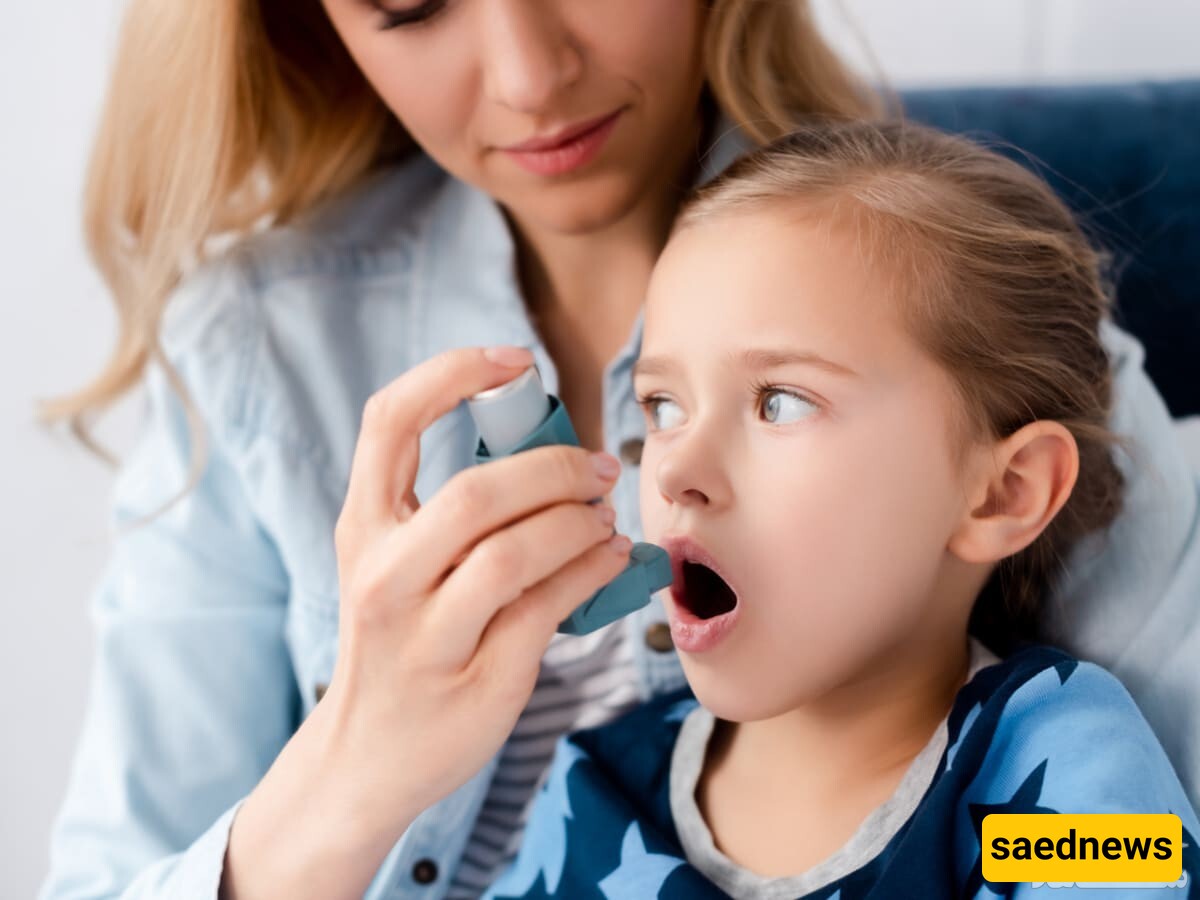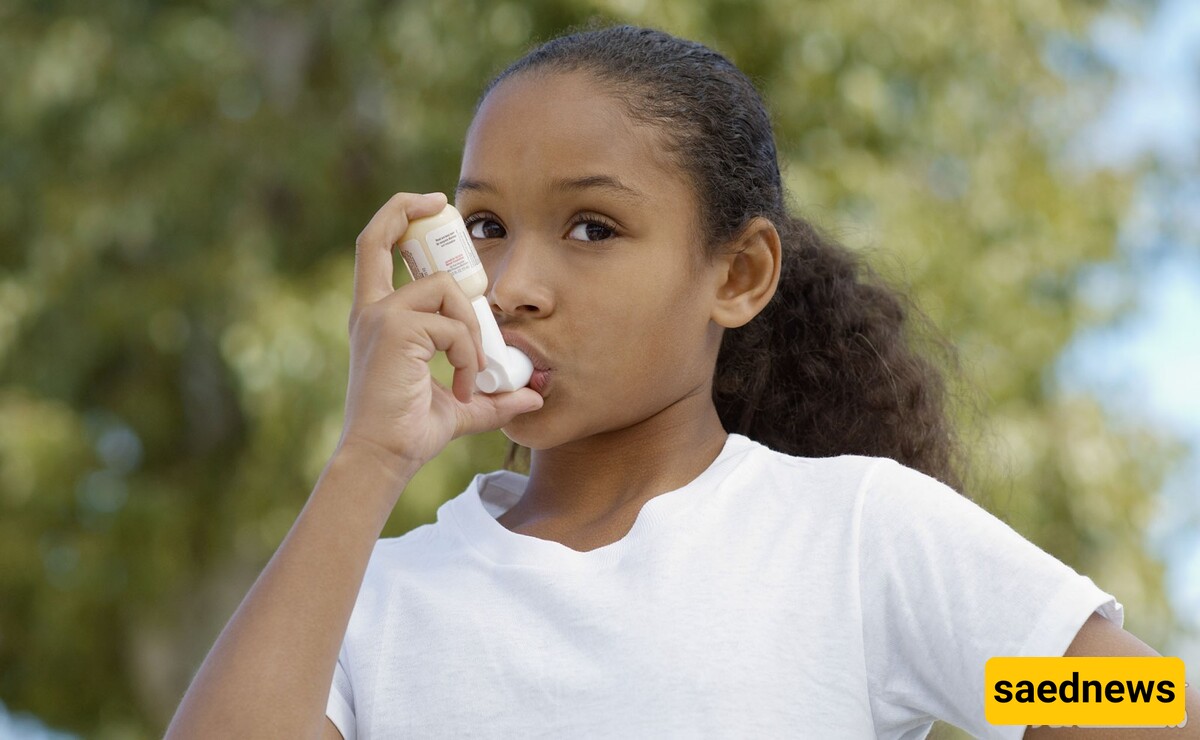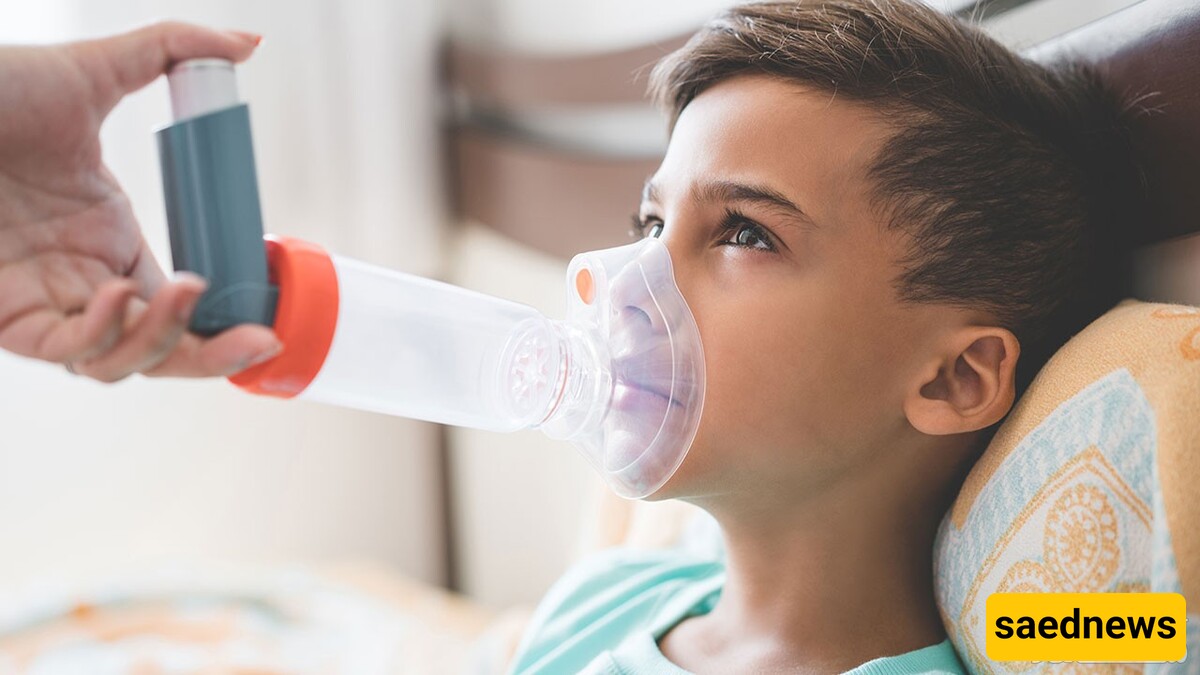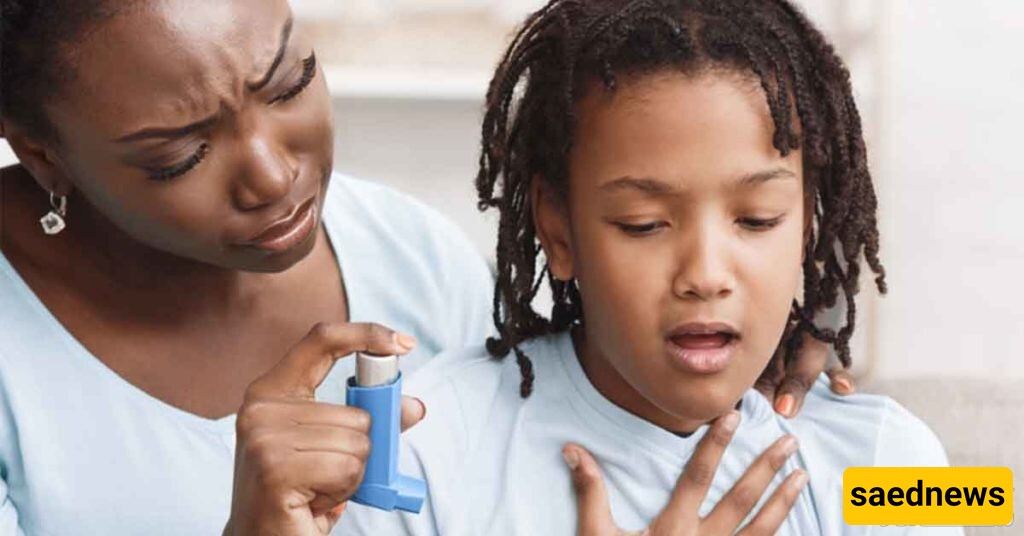Currently, asthma is the most common serious chronic disease in children worldwide. Just like adults, children are not immune to asthma and can develop this condition. However, children face unique challenges that can lead to breathing difficulties and disrupt their daily lives. In this article, we will explore childhood asthma in detail.

Childhood asthma is the most common serious chronic illness in children and the third most common reason for hospitalization in children under 15 years old. Most children with asthma show symptoms before the age of five.
In childhood asthma, the lungs and airways become inflamed when exposed to certain triggers, such as inhaling pollen, catching a cold, or other respiratory infections. It is associated with daily bothersome symptoms that interfere with play, sports, school, and sleep. In some cases, uncontrolled asthma can lead to severe and dangerous asthma attacks.
Childhood asthma is not different from adult asthma, but children face additional challenges in managing it. It is one of the leading reasons for emergency room visits, hospital admissions, and school absences.
Unfortunately, childhood asthma cannot be cured, and symptoms may persist into adulthood. However, with proper treatment, parents can help control the symptoms and prevent damage to the developing lungs.

The exact causes of childhood asthma are not fully understood, but some possible contributing factors include:
A family history of allergies
Parents with asthma
Early exposure to respiratory infections
Environmental factors like cigarette smoke or air pollution
Low birth weight
Race (higher prevalence among Black children)
An overly sensitive immune system can also cause the lungs and airways to swell and produce excess mucus when exposed to specific triggers. Identifying these triggers can be challenging since reactions may be delayed. Triggers vary among children and may include:
Viral infections like the common cold
Exposure to air pollutants, such as tobacco smoke
Allergies to dust mites, pet dander, pollen, or mold
Physical activity
Changes in weather or cold air
In some cases, asthma symptoms may appear without any clear trigger.
Several factors can increase a child's risk of developing asthma, including:

Exposure to tobacco smoke before or after birth
Previous allergic reactions, including skin allergies, food allergies, or hay fever
A family history of asthma or allergies
Living in a high-pollution area
Obesity
Chronic respiratory issues like nasal congestion, sinus infections, or pneumonia
Acid reflux disease (GERD)
Being male
Being Black
Common signs and symptoms of childhood asthma include:
Frequent coughing, especially when the child has a viral infection
Increased coughing at night, during exercise, or in cold air
Wheezing (a whistling sound when exhaling)
Shortness of breath
Chest tightness
Childhood asthma may also cause:
Difficulty sleeping due to breathing problems, coughing, or wheezing
Coughing or wheezing that worsens with colds or flu
Slow recovery from respiratory infections
Breathing difficulties that prevent physical activity or play
Fatigue, often due to poor sleep
Asthma symptoms can vary between children and may worsen or improve over time. Some children may only have a persistent cough or chest congestion, making it difficult to diagnose asthma. Wheezing and other symptoms may also result from bronchitis or other respiratory problems.
Diagnosing asthma in children under two years old can be challenging, as other conditions may cause wheezing or similar symptoms. Respiratory infections are the most common cause of wheezing in young children.

Coughing and wheezing patterns can help doctors distinguish between different conditions:
Recurrent coughing and wheezing following viral infections:
Common in infants and preschool-aged children
Symptoms improve between colds
No family history of allergies (eczema, seasonal allergies, or food allergies)
Usually resolves by age 12
Recurrent coughing and wheezing unrelated to infections:
Often begins before school age
Associated with family or personal history of allergies (eczema, allergic rhinitis, or food allergies)
Symptoms persist between episodes
More likely to continue into adolescence and adulthood
A definitive asthma diagnosis is made through repeated clinical assessments and by ruling out other causes. Lung function tests are usually not feasible for very young children due to their inability to follow instructions.
Childhood asthma can lead to several complications, including:
Hospitalization during severe asthma attacks
Permanent reduction in lung function
Frequent school absences and academic challenges
Sleep deprivation and fatigue
Interference with play, sports, and daily activities
If you suspect your child has asthma, consult a doctor. Early treatment helps control symptoms and may prevent severe attacks. Seek medical attention if your child experiences:
Persistent or intermittent coughing, especially if triggered by physical activity
Wheezing or whistling sounds when exhaling
Shortness of breath or rapid breathing
Complaints of chest tightness
Frequent episodes of bronchitis or suspected pneumonia
If your child has asthma, they might frequently say things like, "I always cough." Pay attention to nighttime coughing that does not wake them up. Emotional reactions such as crying, laughing, or stress may also trigger coughing or wheezing.
In severe asthma cases, your child may struggle to breathe, causing:
The chest and sides of the body to pull inward with each breath
Rapid heartbeat, sweating, and chest pain
Seek immediate emergency care if:
Your child struggles to complete sentences without pausing for breath
They use their abdominal muscles to breathe
Their nostrils flare abnormally while inhaling
Their breathing is so strained that their stomach appears to pull under the ribs
Even if asthma has not been diagnosed, difficulty breathing requires immediate emergency care. Asthma attacks typically start with coughing, followed by wheezing and labored breathing.
If asthma runs in your family, there is no way to prevent your child from developing it entirely. However, you can minimize symptom severity or delay its onset by:
Reducing exposure to dust mites: Use dust-proof mattress covers, remove carpets and stuffed toys from bedrooms, and wash bedding in hot water weekly.
Avoiding tobacco smoke: Even secondhand smoke irritates the lungs.
Limiting exposure to air pollution: Check air quality reports and keep your child indoors when pollution levels are high.
Washing bedding every two weeks in hot water.
Avoiding fireplaces and wood-burning stoves, as their smoke can irritate the respiratory system.
Managing pet exposure: If your child is allergic, keep pets outside if possible.
Reducing mold growth: Use ventilation fans, dehumidifiers, and promptly dry wet surfaces.
Avoiding strong odors from perfumes, sprays, insecticides, and harsh cleaning agents.
Managing weight: If your child is overweight, consult a nutritionist.
Cleaning bedroom surfaces weekly with a damp cloth to remove dust.
Treatment for childhood asthma is similar to adult asthma, with an emphasis on avoiding triggers. Since children are more sensitive to medication side effects, treatment choices are limited. The best approach is eliminating environmental triggers. However, doctors may also prescribe medications, classified into three types:
Reliever Medications:
Also called bronchodilators, these are usually inhaled (sprays).
They relax airway muscles and restore normal airflow.
Preventive Medications:
Reduce airway inflammation and sensitivity to triggers.
Must be taken regularly, usually twice a day.
Emergency Medications:
Used in acute asthma attacks.
Includes high doses of relievers and anti-inflammatory drugs.
Asthma risk increases after age seven, especially if the mother has asthma or allergies. While symptoms improve for 50% of affected children by adolescence, they may return in adulthood. Proper asthma management and parental education are crucial for controlling the condition and ensuring a better quality of life for affected children.

